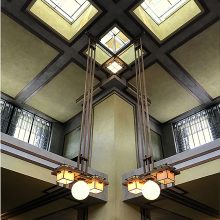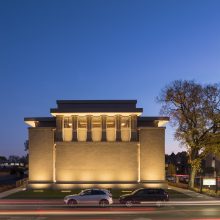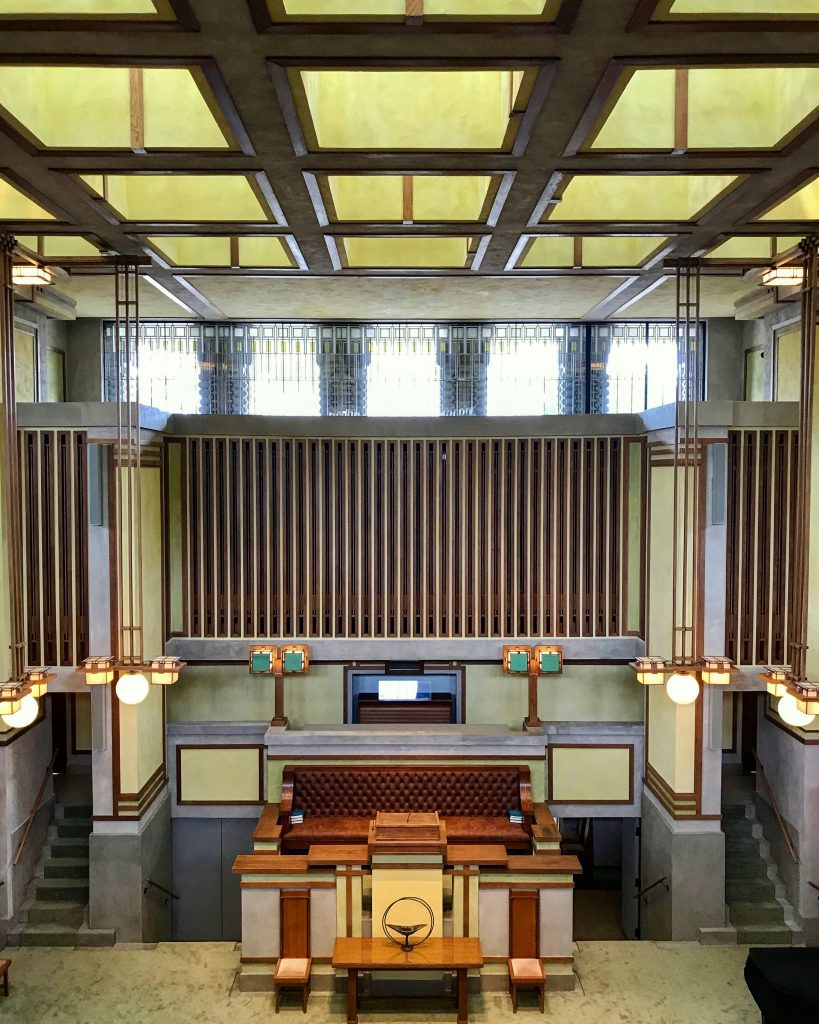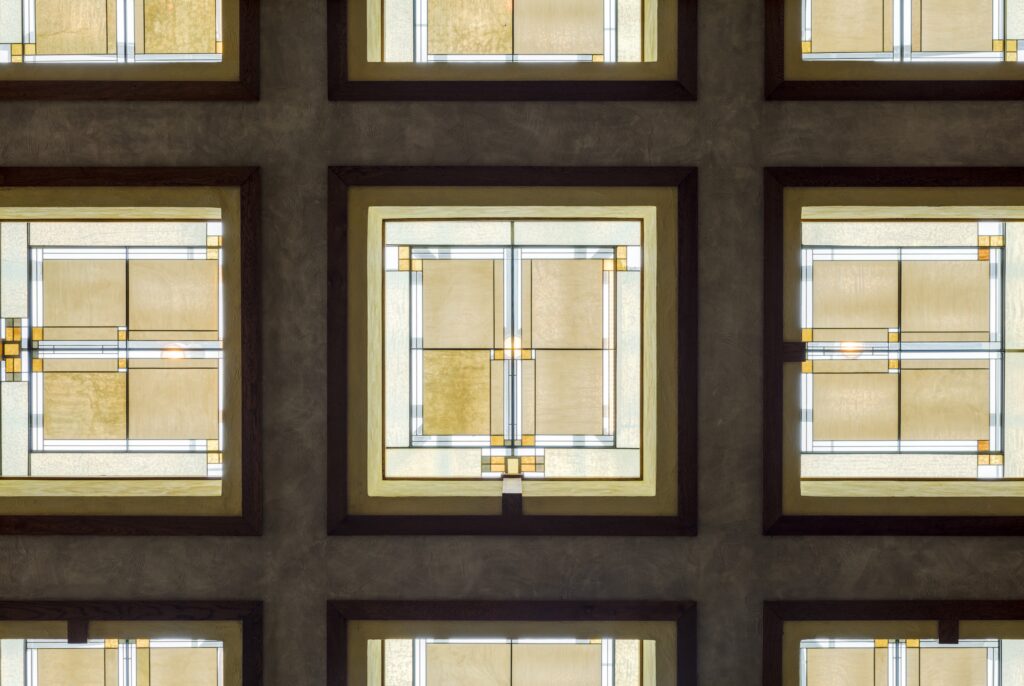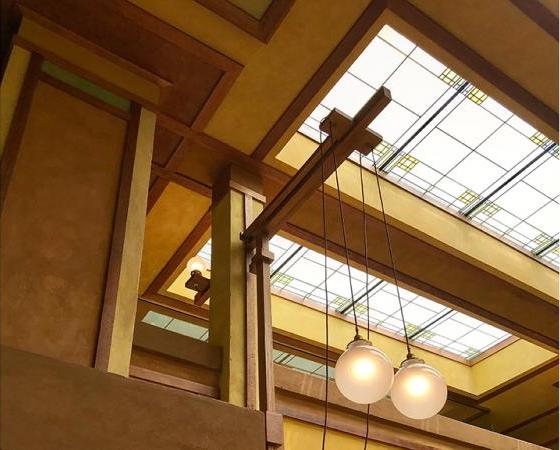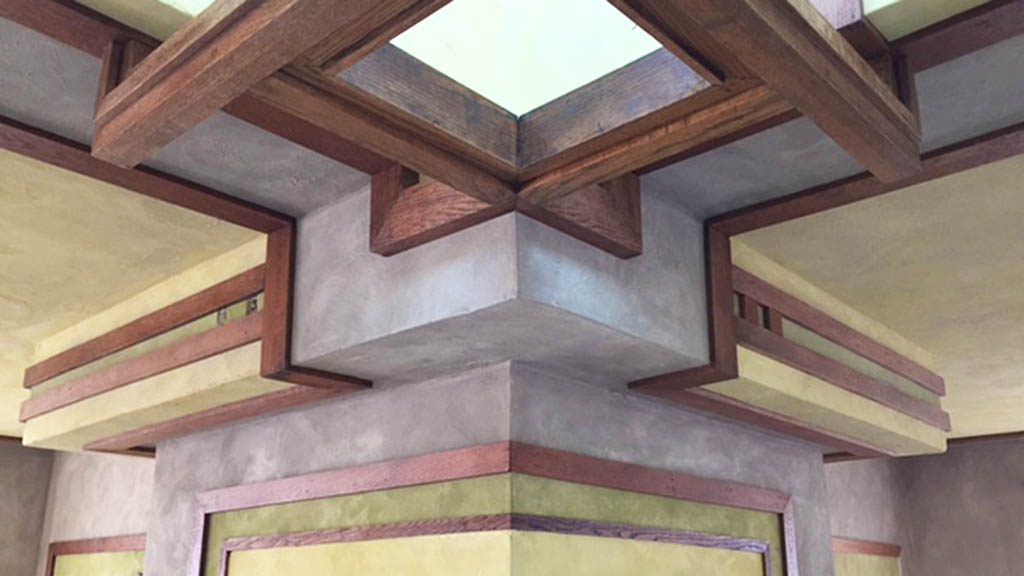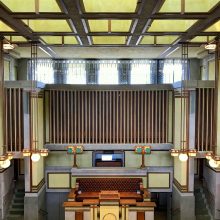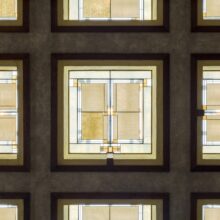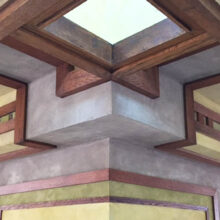When the Oak Park Unity Church was destroyed in a fire in 1905, the Unitarian Universalist congregation turned to local architect Frank Lloyd Wright to design their new church. Frank Lloyd Wright not only lived and worked in Oak Park, IL at the time, but came from a Unitarian Universalist Family. (Did you know EverGreene’s Chicago-based team resides in Oak Park, IL as well?) Although designing the new Unity Temple came early in his career, this building ended up becoming one of the most important he would ever design. Unity Temple is often referred to as “the first modern building” for its use of a single material, reinforced concrete, throughout the building.
Built between 1905 and 1908, Wright created a space that balanced the congregation’s needs for both a Sacred Space and a community space. As he would become famous for doing, Wright designed the church within the context of its location and function. Unity Temple sat on a busy street, so to ensure a quieter space for worship, Wright eliminated all street level windows. All the light in the building came in through clerestory and ceiling windows, which used stained glass to color the light in greens, browns, and yellows to evoke nature. Frank Lloyd Wright would later say that the experience of designing this church was important for his own growth as an architect and the first time he realized that the real heart of the building is in its space, not its walls.
Unity Temple has been a U.S. National Historic Landmark since in 1971 and has consistently been recognized as one of the most significant buildings in the United States. When Unity Temple underwent a $23 million interior and exterior restoration in the spring of 2015, EverGreene was contracted to conserve and restore interior finishes. The finishes were analyzed and it was determined that the original sand plaster was an integral component of the final appearance because of the transparency of the paint. EverGreene identified a sand that matched the original and produced mock-ups using a recipe determined by the analysis. Paint removal tests determined that the original surfaces could not be uncovered to produce accurate samples of historic paint finishes. Instead, the plaster was skim coated and new plaster was applied to replicate the historic paint finishes.
If you are interested in seeing EverGreene’s work in person, or in experiencing one of the most architectural significant buildings yourself, Unity Temple is open for tours.
